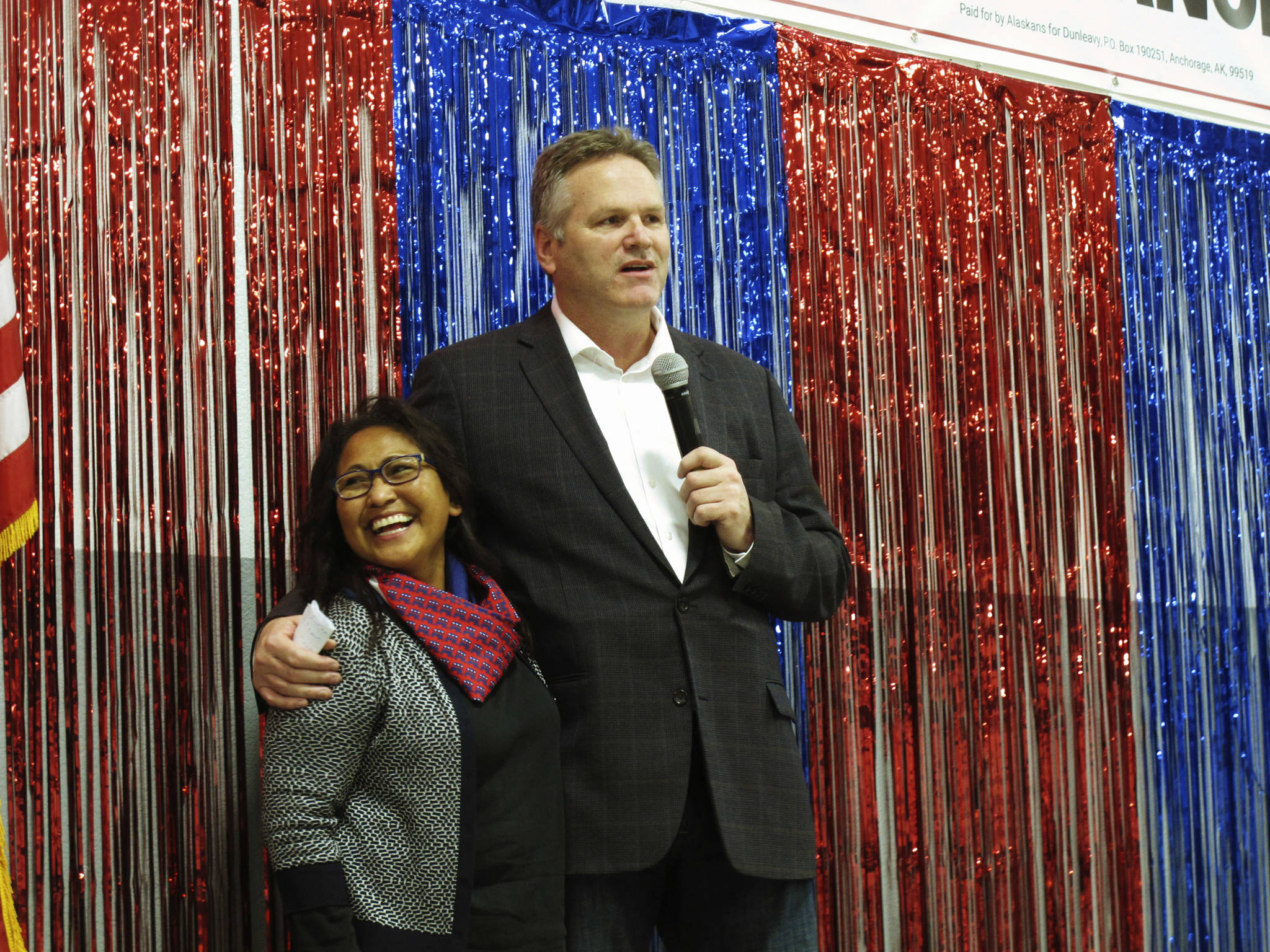JUNEAU — Alaska Gov.-elect Mike Dunleavy takes office Monday, days after a magnitude 7.0 earthquake rocked heavily-populated south-central Alaska.
Dunleavy initially planned to make a 65-mile trek by snowmobile from the western Alaska hub city of Kotzebue to Noorvik for the swearing in. Noorvik is a tiny Inupiat Eskimo village above the Arctic Circle where his wife, Rose, is from.
But transition spokeswoman Sarah Erkmann Ward said those plans would have required an overnight stay in Kotzebue. Given the ongoing earthquake response, Dunleavy decided to abbreviate his trip, she said. He plans to fly to Noorvik on a private charter from Anchorage on Monday, she said.
Rural Noorvik mainly is accessible by plane and boat, on the Kobuk River. Locals commonly get around using snowmobiles and ATVs.
Dunleavy said he has been in close contact with Gov. Bill Walker about the emergency response. And Walker said Friday he did not expect the recovery to be affected by the transition in administrations.
Walker said his administration advised Dunleavy’s team of what it was doing and that some members of Dunleavy’s team were involved in what Walker’s administration was doing.
A magnitude 7.0 earthquake rocked Anchorage and other parts of south-central Alaska Friday, shaking buildings, buckling roads and spawning nerve-wracking aftershocks.
Walker said Sunday he and Lt. Gov. Valerie Davidson would not attend the swearing in and instead would stay in Anchorage to help with reopening state buildings. Walker’s term expires at noon Monday. He said he wished Dunleavy well.
It is unusual, but not unprecedented, for an Alaska governor to be sworn in outside the capital city of Juneau, though Dunleavy’s ceremony will be the first to take place above the Arctic Circle. Former Govs. Sarah Palin and Sean Parnell had their events in Fairbanks, one of Alaska’s largest cities.
The swearing-in typically kicks off a celebratory season for new governors. Dunleavy previously announced events around Alaska during December.
Dunleavy has just six weeks before the start of the next legislative session, when Alaskans will be watching to see how he plans to act on key campaign pledges. He rankled some when shortly after his election, his transition chief sent letters to about 800 at-will state employees asking them to offer their resignations and indicate whether they wanted to continue working under Dunleavy.
“The Chief Executive is the one responsible for ensuring that the right people are in place to best fulfill the promises made and restore trust between the people and their government,” Dunleavy said in a statement.
During the campaign, Dunleavy said he wanted to limit government growth and reduce spending, though was criticized for failing to offer many specifics. Details are expected in his budget plan.
Debate also is expected over whether, or how far to, unravel a major criminal justice overhaul amid an ongoing public outcry over crime.
One of the big issues in the campaign was the future of the annual check Alaskans receive from the state’s oil-wealth fund, the Alaska Permanent Fund. Dunleavy said he supported a full payout of the check and paying Alaskans the amount they missed out on when annual checks were capped. Preliminary budget estimates suggest those pieces alone could cost $4.3 billion, though Dunleavy said he saw it as a way to help restore trust with Alaskans. The check has been capped since 2016 amid a budget deficit.
Legislators earlier this year began using fund earnings to help fill much of the deficit. Earnings are used to pay the yearly check, setting up a political fight.
Sen. John Coghill, a North Pole Republican, said resolving debate over the dividend is critical, and some methodology for a dividend will need to be advanced.
He said he does not favor repaying money from the past three years and doesn’t think a full dividend under the current formula is a “slam dunk,” either. “I think it’ll be a painful, deliberate and highly volatile discussion,” he said.
Anchorage Sen. Mia Costello, the incoming Senate majority leader, said legislators have heard from Alaskans that protecting and growing the dividend is important. She said she’s dedicated to that.
“What form that takes has yet to be decided,” Costello said, noting the discussion needs to go beyond the legal formula that has not been followed since 2016. She said she will look for long-term sustainability of a “healthy” dividend.
• By BECKY BOHRER, Associated Press

